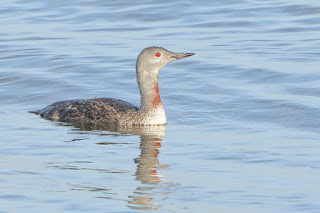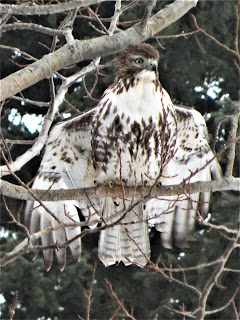NATURE MONCTON NATURE NEWS
October 22, 2024
Nature
Moncton members as well as any naturalist in New Brunswick or beyond are invited to share their photos and
descriptions of recent nature sightings to build a fresh (almost) daily edition
of Nature News
To respond
by e-mail, please address your message to the information line editor, nelsonpoirier435@gmail.com .
Please
advise the editor at nelsonpoirier435@gmail.com if any errors are noted in wording or photo
labelling.
For more information on Nature Moncton, check the website at www.naturemoncton.com .
Proofreading
courtesy of Louise Nichols at nicholsl@eastlink.ca
**John Inman sends the first photo of his Red-tailed Hawk when it first arrived in February 2009 as an immature bird and quickly took an offering of meat scraps as it was a poor winter for hunting due to a heavy layer of ice under the snow and not much in the way of rodents. On Monday morning (Oct 21, 2024), it was back waiting patiently in the poplars for John to take out its meat scraps. It will be going into its 16th winter at the site and it is amazing how they can relocate places. John comments “I wish I knew where it spent the summers”.
(Editor’s note: this is a very interesting scenario -- how this bird arrives at the same time of year for its unconventional menu and departs on its seasonal mission in March. Will it do the same in late fall 2025 at 17 years of age?)
For the last couple of weeks. Common Grackles have popped in occasionally between hawks for a quick feed and three Red-winged Blackbirds have been doing the same. One Red-winged Blackbird is sharing suet with a Hairy Woodpecker.
The resident Bald Eagle has been going through
yards and snapping off dead branches to shore up the nest for the winter as
they have done in the past.
**Suzanne and Yves Poussart went for a drive along the coast on Sunday. In the area of Grande-Digue (about 4 km north of the Cassie Cape wharf), Yves spotted two individual Red-Throated Loons which were not too far from the road. Several additional individuals were also seen farther out. They were all actively diving, returning to the surface after an underwater swim of 60-80 m on average. Yves was lucky enough to photograph two individuals swimming together and one returning after a nice catch of what seems to be a Striped Bass. This prey was swallowed whole within five seconds. Yves returned to this location on Monday afternoon and saw several individuals of this species but they were too far out for photos). Several Common Mergansers were also seen.
**An unexpected guest was found in the moth trap of Tony Thomas this morning (Oct. 21st, 2024): a Giant Water Bug, also known as Electric Light Bug, Toe Biter, or Fish Killer.
These bugs are large, up to 60 mm (2.25 inches) in
length, have prehensile front legs, and can catch live prey as big as
themselves. They also have formidable mouthparts in the form of stylets
that can easily puncture human skin.
They can obviously fly; adults overwinter in ponds.
This one was released into Tony's bird water bath and hopefully will take off
tonight.
**On Monday Brian Stone went for a brief walk around
the Highland Park ponds in Salisbury to get some fresh air. Some Bonaparte's Gulls circled over the nearly empty ponds and Brian waited until he got to the
far side of the ponds so the light would be behind him but by then the gulls
were gone so no photos. An adult Bald Eagle scared all the duck life up
and out of the pond as it did a low flyover, but they returned quite quickly as
soon as it went past. Pretty much all the ducks visible were Green-winged Teals
with a few Pied-billed Grebes scattered around.
In the center of the ponds some muddy earth was
exposed by the low water levels and some Killdeers, Yellowlegs, and
about six Wilson's Snipe were foraging and resting there.
Nelson Poirier
Nature Moncton




.%20OCT.%2020,%202024.%20YVESPOUSSART..jpg)
.%20OCT.%2020,%202024.%20YVES%20POUSSART..jpg)



.JPG)
.JPG)
.JPG)
.jpg)
.JPG)
